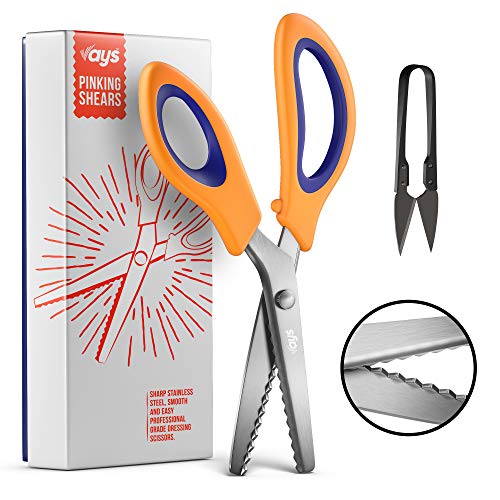Pinking Scissors: A Must-Have Tool for Every Sewing Enthusiast
Whether you’re new to sewing or have been making your own clothes for years, you’ve probably heard of pinking scissors and wondered what they’re used for. These specialized scissors are a valuable tool for any sewing enthusiast. In this article, we’ll explore what pinking scissors are, how they work, and their various applications.
What are Pinking Scissors?
Pinking scissors look a bit different than regular sewing scissors – they have a zigzag edge instead of a straight edge. This unique edge creates a zigzag pattern on fabric and helps prevent fraying. Pinking scissors come in various sizes and can have straight or curved blades, depending on your needs.
How Do Pinking Scissors Work?
Pinking scissors work by cutting fabric in a way that prevents fraying. The zigzag edge creates small notches along the fabric’s edge, which helps prevent the weave from unraveling. While pinking scissors won’t completely stop fraying, they do slow it down considerably and create a neat, finished look.
Applications of Pinking Scissors
Pinking scissors have many applications in sewing projects. They’re especially useful for finishing seams on fabrics that tend to fray, such as cotton, linen, or wool. Pinking shears also work well on lightweight fabrics, like chiffon or lace, that can be difficult to finish with a regular zigzag stitch. Pinking scissors also come in handy for creating decorative edges on fabric. They’re great for adding a playful touch to children’s clothing or jazzing up a plain tea towel.
Tips for Using Pinking Scissors
When using pinking scissors, it’s important to keep a few things in mind. First, always make sure your blades are sharp. Dull blades can cause your fabric to fray or create uneven edges. Second, be sure to use pinking scissors only on fabrics that tend to fray – if you use them on fabric with a tight weave, you could end up creating a zigzag pattern that’s distracting. Finally, be sure to position your fabric so that the zigzag pattern is facing the seam allowance and not the main body of the garment – otherwise, the zigzag pattern might show through on the right side of your project.






